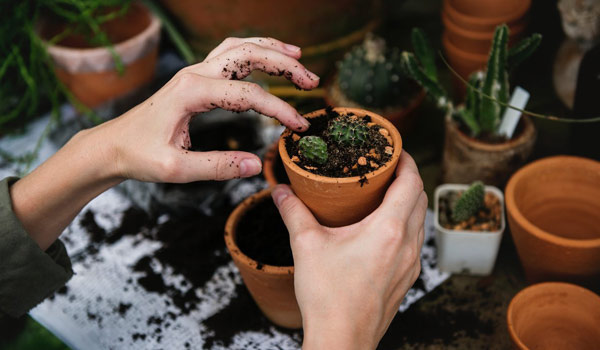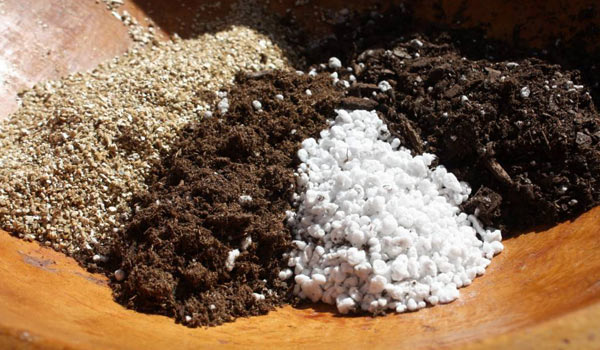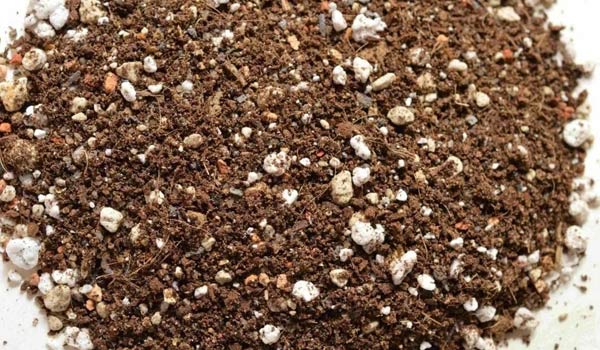What Is Cactus Soil & How to Make Cactus Soil

Cactus Soil and All You Need to Know About It
A lot of today’s professional gardeners most probably started their adventure in the world of green with a spiky little friend, a cactus. They need minimum care and maintenance; so, why not?
Everyone knows that they love the sun, and don’t need much water. The only thing remaining in order to have a really healthy and happy plant is cactus soil.
In case you didn’t know, the right cactus potting soil doesn’t just provide the nutrients that it needs. Providing the right cactus soil mix also helps the plant handle environments with high humidity (which is not its favorite).
In this guide, we’re going to talk about everything you need to know about cactus potting soil, and how it is different from any other potting mix. Also, we’ll tell you how to make your own cactus potting mix.

What Is Cactus Soil?
Let’s start simple. What’s cactus potting soil? Cactus mix, cactus soil mix, and its other names refer to a blend of inorganic materials including sand, gravel, pumice, and perlite. Such mix provides excellent drainage, therefore, it is ideal for growing various cacti and succulents.
Whether you need Christmas cactus soil or for other cacti, you can find cactus potting soil in nurseries and garden centers.
Why Should You Care about Cactus Potting Soil?
Cacti are hardy plants, so why not just fill their containers with any soil that you can get? The thing is, not that any soil mix can mimic the native environment where these desert plants grow like cactus soil mix.
Despite what we see on the surface, Cacti have delicate root systems that can’t thrive in dense potting mixes. As established, they’re also drought-tolerant. Meaning that the roots do far better in dried-out soil (for a period of time), but their root can rot easily in soggy situations.
As a result, your cactus mix shouldn’t be high in organic matter, because these types of soil hold excess moisture. The right soil for cactus addresses all of the unique needs that cacti (and succulent) have. Additionally, it is formulated in a way so it can help your plant grow best indoors.

Cactus Soil Mix vs. Regular Potting Mix
In a nutshell, what the suitable soil for cactus does better than regular mixes, is forming a basis for the roots. It also prevents the root system and the stems from sitting in moisture, which causes rot.
In a more detailed manner, these are the differences between cactus potting mix and regular potting soil or potting mix:
Drainage
First and foremost, Miracle-Gro cactus soil and other commercial mixes, have superior drainage dry out quickly after each irrigation; which is a must-have for a ready-made or DIY cactus soil.
When you water your plant, it harvests the moisture it needs immediately to store in its flesh. Cacti get this habit from living in the desert, where they experience long periods of drought with short bursts of rain and moisture.
So the excess water needs to drain or be evaporated quickly. This way you can make sure that fungal diseases or root rots won’t be a problem. And despite cactus potting soil, regular potting mixes don’t drain as quickly.
Composition
The cactus potting mix owes its famous drainage to its composition. Inorganic materials like perlite, pumice, grit, gravel, and/or sand make up the cactus potting soil. They are all organic matters that don’t maintain moisture.
On the other hand, regular potting mixes are highly composed of organic matters like peat moss, compost, and coco coir. They are ideal for growing foliage plants, and soak up and retain moisture, which is not good news for cacti.
Aeration
Aeration is another signature cactus mix feature. It is not dense, so it can provide the proper air circulation that the delicate cactus roots require to grow best. A regular potting mix doesn’t allow the aeration that cacti need.
Nutrients
The nutrient content is another difference that you can spot between cactus soil mix and regular potting mixes. The latter is rich and often modified with additional fertilizers to boost plant growth. However, Cacti don’t do well in rich soils and grow better in a nutrient-poor cactus mix.

How to Make Cactus Soil
Commercial cactus potting soils guarantee all the nutrients that your plant needs easily. They contain the right ratio of inorganic materials (perlite, sand, gravel, etc.) as well as a small amount of organic material like peat moss or coco coir. But you can always make your own soil as well.
It may take some time, but a DIY cactus soil is actually cheaper. This is how to make cactus soil:
- First DIY Cactus Soil: For this cactus potting soil, simplycombine three parts potting soil, three parts coarse sand or gravel, and two parts perlite or pumice together. We don’t recommend using a soil mix that has fertilizers. This is because the fertilizer can burn cacti roots and result in leggy growth.
- Second DIY Cactus Soil: You can also combine five parts potting soil, two parts pumice, and one part coir. This gives you another cactus potting soil that dries out evenly.
Tip: If you are in very dry areas, add peat to your soil for cactus; but don’t let it dry out completely. In most other areas and indoors, your cactus will grow fine with one part washed sand, one part soil, and one part pebbles.
These are just two examples of how to make cactus soil. Remember that the perfect soil is determined depending on your cactus. In addition to that, you need to provide other factors for growth as well: water and light.
Are You Using the Best Cactus Mix?
It is important to provide the right cactus soil mix from the start. This is because when you notice any decline in the plant’s health, it may be too late for repotting and using fresh soil.
Let’s say you’re looking for the best soil for Christmas cactus. To avoid any problems, first, you need to know where the cactus’s natural habitat is. If it grows in deserts, just use a blend of clean fine sand, grit, and soil for the cactus soil mix. And if it’s a tropical species, add peat as well.
Hopefully, now you know all you need to know about cactus potting soil. To help your plant even more, choose unglazed containers. These kinds of pots allow excess moisture to evaporate quickly. Also, make sure to water your cactus deeply only when the cactus potting mix is dried out completely (not crusty).
- In this post:
- What Is Cactus Soil?
- Why Should You Care about Cactus Potting Soil?
- Cactus Soil Mix vs. Regular Potting Mix
- How to Make Cactus Soil
- Are You Using the Best Cactus Mix?



